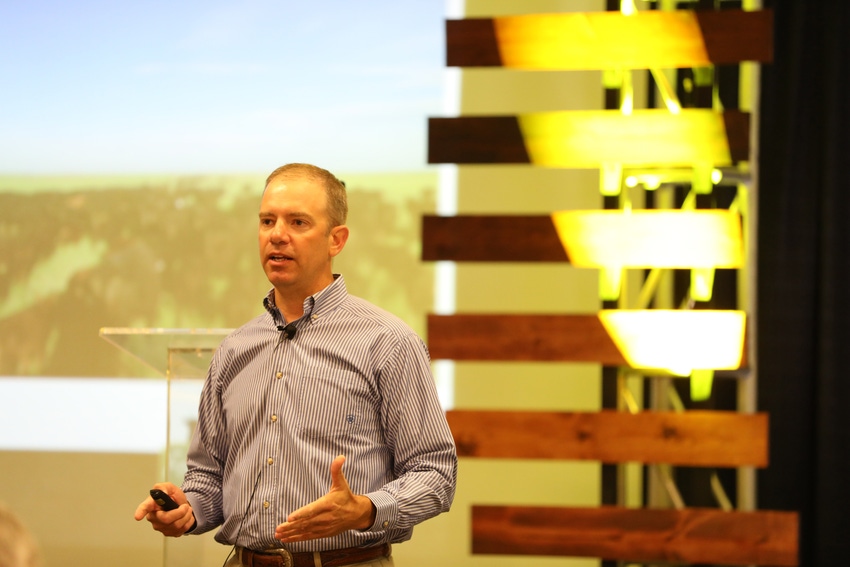Grid marketing and you: Why it matters at the ranch gate
How fed cattle sell on a grid can translate to bids on your feeders. Here’s why.
October 18, 2018

“You and I as cow-calf producers unhook ourselves from our product very early in the life cycle of that animal. It’s not that we don’t care about what happens to our calves as they go on, or that they don’t have value to the next owner. It’s the fact that we don’t ever learn about that.”
And that, says Paul Dykstra, Certified Angus Beef (CAB) beef cattle specialist, is an opportunity missed, except for the 18% of herd operators who retain ownership through finishing and harvest. The rest naturally move on to the next production season, the next calf crop.
But in the last 10 to 15 years, the average calf sold has carried increasingly greater potential to hit the Choice, CAB and Prime targets. That’s partly because the market incentivized such genetic potential through grid marketing for fed cattle, Dykstra says.
Speaking at the recent Feeding Quality Forum, he told attendees that the type of marketing greatly increased in those years, too. Carcasses with more marbling and a lower yield grade earn the highest premium, while those with the least marbling and most external fat (higher yield grade) stand the greatest discounts.
“The landscape has changed in marketing cattle,” Dykstra said. “The fact, and how short of a timeframe and how dramatically it has occurred, is important for us to recognize.”
It suggests that calves capable of topping a market should fit that later grid market.
Technology has affected the calf and cattle markets at every level. From DNA testing on the ranch to feeding distiller’s grains for better feedlot performance to camera grading in packing plants, improvements have driven an increase in carcass quality.
Carcasses accepted for CAB grew from 2.5 million to 4.5 million in a decade, with new supply records toppling every few weeks and nearly every month. Rapid increases in supply typically mean lower premiums, but the Choice-Select spread has run steady to higher, even as the supply of Select fell dramatically.
“If we’re going to get paid for CAB, we first get paid on the Choice-Select spread above plant average, and then we add on top the CAB premium,” Dykstra said. Showing the trends that go against expectations, he added, “The price only gets stronger as we moved into more supply—it doesn’t get weaker.”
He showed examples of steers that may look very similar but by virtue of feed efficiency, carcass quality and other performance factors, command a value difference of $131 per head.
“We need to figure out a way to get those dollars and cents back into the system,” Dykstra said, suggesting a need for more documentation and perhaps more attention to “terminal” trait selection in the cow herd.
“Even in herds that keep replacement heifers, 80% to 85% of the calves are terminal,” he pointed out. Studies show more than 92% of eligible cattle that failed to qualify for CAB fell out for lack of marbling, while balanced selection to include that trait has almost no impact on other traits.
Looking at the bigger picture, he noted the effect of seasonality in markets, showing predictable spikes in the Choice-Select spread, especially in late spring.
“These last two springs, we saw a $20 Choice-Select spread there in April and May,” he said. “If we deliver a 500-pound calf in October to the feedyard, it’s probably not coming out in April, May or June. It’s probably coming out in July when the carcass quality price spreads are seasonally narrower.”
You can’t always change to better fit a market, but “but if we want to capture the value we’re breeding into our cattle, we need to think about it.”
Jera Pipkin is a Certified Angus Beef fall intern, a Missouri native and Oklahoma State University student.
You May Also Like



